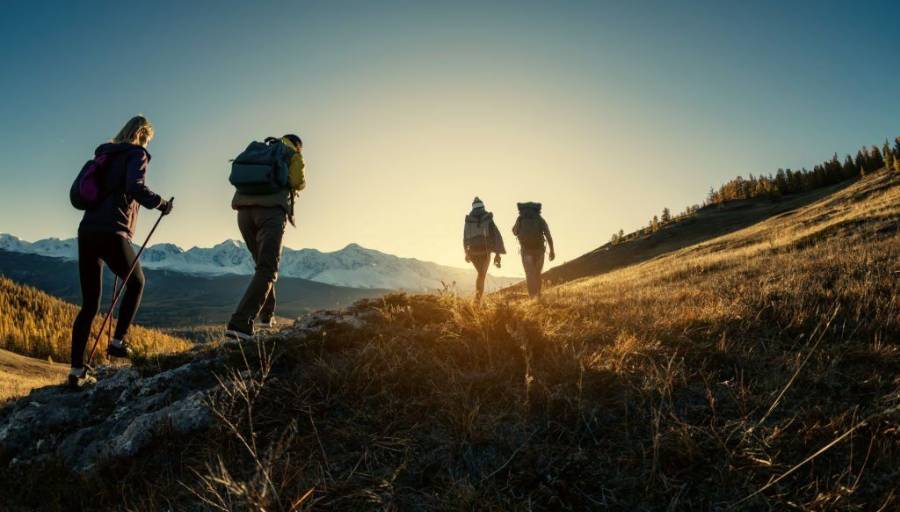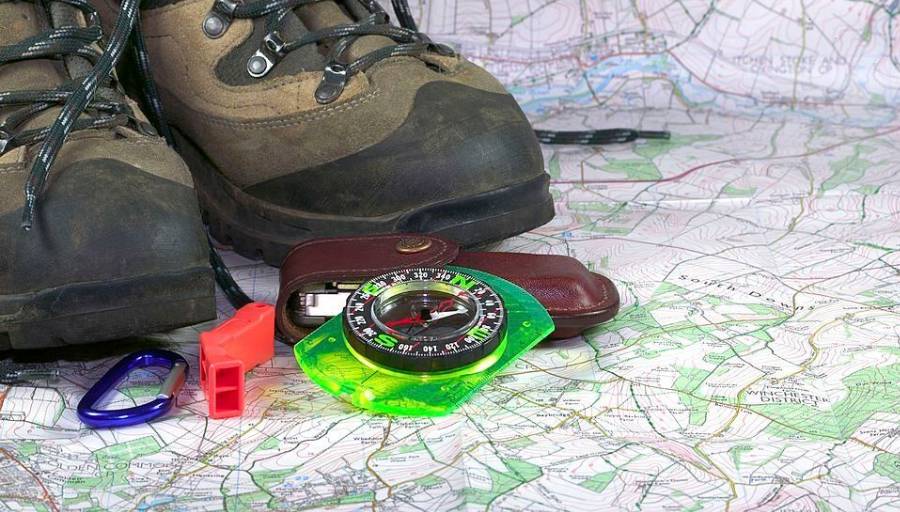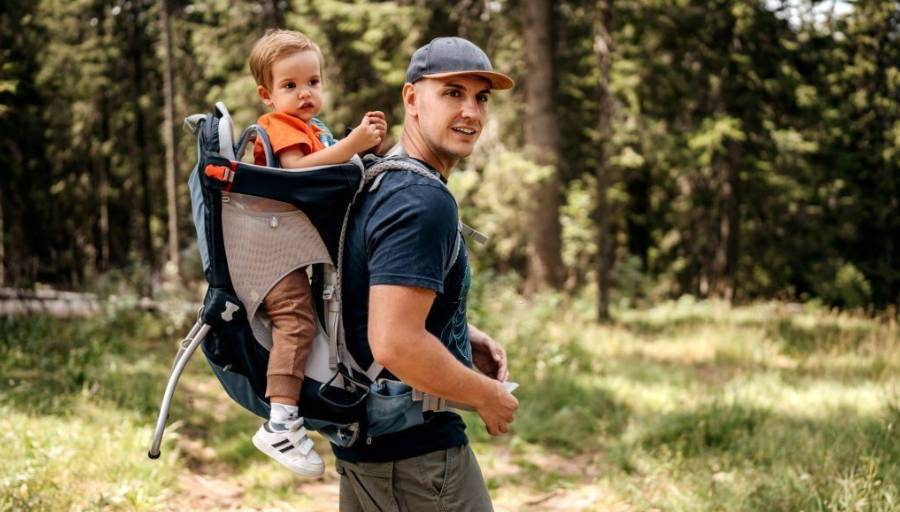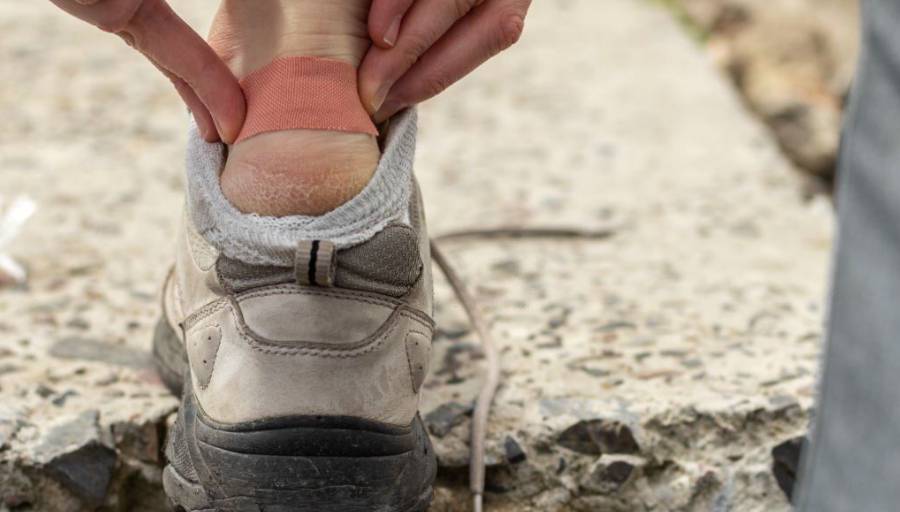How to Get in Shape for Hiking

Embarking on a long hike can be an exhilarating adventure, connecting you with nature and pushing your physical limits. However, without proper preparation, the experience can quickly turn challenging, potentially putting you in danger, causing premature exhaustion, and transforming an anticipated journey into a less-than-pleasant ordeal.
Therefore, our comprehensive guide aims to equip you with essential insights on how to get in shape for hiking. By addressing fitness, endurance, and safety considerations, we will ensure you’re well-prepared to conquer the trails and foster an enjoyable and rewarding hiking experience.
The 3 Pillars of How to Get in Shape for Hiking
To succeed in your physical preparation for hiking, you will need to focus on 3 essential points:
- Sport: Prioritize activities that specifically prepare your body for the physical demands of hiking. Incorporate exercises that enhance cardiovascular endurance, build leg strength, and improve overall flexibility.
- Lifestyle: Complement your fitness regimen with a holistic approach to lifestyle. Adequate sleep, balanced nutrition, and proper hydration are integral components that work in synergy with physical training.
- Mind: Recognize that extended hiking is both physically and mentally demanding. Boost mental resilience with mindfulness, visualization, and stress management in your routine.
Sports Activities Are Essential
Sports activities during physical preparation for hiking will allow you to get your body back in shape. Therefore, your body will be able to withstand a great test both on the muscular and cardiological levels. However, these tips are not necessarily designed for fast hiking, whose training is often distinct and more sustained.
Muscle Building
Strength training prepares your body, including:
- Legs: Increase leg strength to endure the demands of long walks.
- Upper Body: Specifically target shoulders and back strength to support carrying your backpack during extended hikes.
The best sports exercises for muscle building are:
- Bodybuilding: Target specific muscle groups for enhanced strength.
- Roller Exercises: Tone the entire body, emphasizing buttocks and legs.
- Cycling: Strengthen lower limbs through biking.
- Swimming: Engage all muscle groups for comprehensive conditioning.
- Toning Exercises: Engage activities like squats or yoga to tone your entire body.
Cardio
Cardio is an important part of physical preparation for hiking. It trains your heart for sustained physical demands. The more you have good cardio preparation, the more you will be able to withstand the physical efforts during a long hike. Indeed, the heart is a “pump” organism that, via the blood, distributes nutritional resources and oxygen to the various organs and tissues (particularly muscular).
A non-athletic person will have a faster beat per minute, especially during intense effort. Indeed, his muscle tissues will need more nutrients and oxygen and more quickly. Conversely, a physically prepared person, such as an athlete, will have a slower beat per minute because their muscles and other tissues and organs will not require as much nutritional and oxygen supply. He will run out of breath less quickly and will retain his strength more easily.
For training your cardio, there are several exercises or sports:
- Running: Jogging stands out as one of the most effective sports for cardio conditioning.
- Walking: An excellent alternative to jogging, especially for those new to regular physical activity.
- Swimming: Not only does it enhance cardio fitness, but swimming also provides full-body toning.
- Rowing Machine and Elliptical Trainer: Ideal for gym-goers, these machines offer low-impact cardio workouts.
- Explosive Exercises: Incorporate CrossFit-style workouts for dynamic, high-intensity training sessions.
Endurance
Endurance goes hand in hand with cardio. Indeed, by working on your cardio, you can improve your endurance. Nevertheless, endurance remains an aspect to work on in its own right. It allows the hiker to walk longer while getting out of breathless easily. Endurance exercises are quite similar to cardio exercises.
The difference lies in the speed of execution and the duration:
- Endurance Exercises: Slower speed but over a long period of time.
- Cardio Exercises: Faster speed but for a short duration.
The best physical activities to work on your endurance are:
- Jogging: If possible by varying the types of terrain (flat, uphill, downhill).
- Cycling or Rollerblading: Also varying the types of terrain when possible.
- Swimming: This is one of the best solutions for physical preparation for hiking because it works on all the necessary aspects.
- Walking: By doing small short treks, you can train for your next adventure but also better assimilate walking techniques while hiking.
Lifestyle Change Is Part of Hiking Preparation
To prepare for a long trek, your body must be in good health. This involves several aspects:
- Eliminate Bad Habits (when possible): Steer clear of tobacco, alcohol, junk food, and stressful situations to promote overall well-being.
- Maintain a Balanced Diet: Prioritize a nutritionally rich diet to ensure you receive essential elements, guarding against potential deficiencies.
- Aim for 8 Hours of Sleep (on average) per Night: Prioritize sufficient rest as it is crucial for both your health and physical preparation, laying a solid foundation for the challenges ahead.
Remove or quit your bad habits
Be careful with this advice though. Stopping bad habits can only be good for your body and therefore your physical preparation for hiking. However, drastically stopping this type of behavior can also be harmful because it can reduce your motivation and distract you. In this case, it is preferable to reduce the frequency of the appearance of bad habits rather than to eliminate them:
- For Cigarettes: Avoid smoking before and after physical training. Indeed, before exercise, tobacco will quickly make you out of breath. After sport, the puffs of smoke enter your lungs in greater quantity, which is very harmful.
- For Alcohol: Avoid leaving in the evening and having a hangover. Indeed, this will directly affect your motivation and you risk not following your training schedule.
- For Stress: If you cannot eliminate stressful situations, take at least a quarter of an hour a day to practice relaxation so that you can evacuate the accumulated stress. Jogging can also be the ideal solution to release your stress and prepare you physically for your future hike.
Readjust your diet
A balanced diet is an essential step in your physical preparation because it helps to get your body back in shape and allows it to be better able to withstand intense sporting demands. If you’re unsure about how to readjust your diet, I recommend consulting with a dietician. They can provide a tailored solution that suits your individual needs without causing frustration.
Get enough sleep
The strength of sleep is often underestimated. However, it is during this phase that your body can recover from the physical demands made during the day. By getting enough sleep (but not too much) you can also limit the impact of muscle aches on your body and prevent your motivation from being undermined.
Mental Prep is Crucial for Long Trek
The mind is perhaps the most important element of successful physical preparation for hiking. Indeed, it will allow you to keep your motivation intact. Nevertheless, having the mind for this type of adventure requires work.
Train with short hikes
Before starting a long and grueling journey, I recommend you train with shorter treks of a few hours or even a day. This will allow you to begin to apprehend your future hike and will prepare you both mentally and physically for what you will have to endure.
Learn by reading or watching documentaries
Good theoretical preparation is essential for a trek. It allows you to fully understand what you are going to experience and drastically reduces the occurrence of unpleasant surprises.
For this, it is advisable to:
- Watch documentaries on the hikes, if possible the one you want to do.
- Read books or blogs about long hikes. You can find tips for hiking there.
- Find out about your journey, and the potential dangers and adversities you may encounter there.
Prepare to avoid unpleasant surprises
Effective mental preparation involves careful planning of your route and gear:
- Research: Familiarize yourself with the park, local legislation, campsites, and laws.
- Select Appropriate Gear: Opt for quality hiking socks, suitable trekking shoes, and well-chosen walking sticks.
- Mind Your Backpack: Choose accessories and equipment thoughtfully to prevent excessive weight. To find out more, here is the essential equipment for hiking.
How to Properly Plan Your Physical Preparation?
Now that you’re aware of the three pillars to focus on during your physical preparation for hiking. Here is the guide to properly planning your trek training.
Know Your Physical Condition
Your physical condition is a crucial factor in shaping your program. It dictates the duration of your preparation, sets objectives, determines exercises, establishes pace, and outlines sub-goals to keep your motivation intact. To do this, take a moment to properly assess your physical condition, are you:
- Sedentary Person: In this case, you will have to plan physical preparation over a longer term, start with a fairly light pace, and increase the difficulty slowly.
- Former athlete: The recovery will undoubtedly be difficult but afterward, you will succeed more easily in adapting to the rhythm of the training sessions. Take this into account in your preparation.
- Occasional athlete: Your challenge will be above all to succeed in keeping a regular training rhythm. Don’t start too strong and keep your goals in mind.
- Great Athlete: You are probably accustomed to sports preparations, so you will have to keep your rigor and be able to increase the difficulty of your training more quickly.
Also, look at your hiking experience:
- Are you a total beginner?
- Are you an occasional hiker?
- Do you hike regularly?
Define Your Objectives Upstream
You must have already thought about your hike upstream:
- How many days will it last?
- What will be the weight to carry daily?
- How many hours of walking do you plan to do each day?
- How difficult will your trek be? Will it take place in the mountains? On hilly terrain? Under what conditions (cold, heat, temperate)?
Go Ahead
Preparing for the hike cannot be done over too short a period. Indeed, it will be the regularity that will allow you to improve in the long term. To determine the duration of your physical preparation for the hike, consider your objectives, hike conditions, physical condition, and experience.
My recommendations for physical preparation durations are as follows:
- Seasoned Hiker: 1 to 2 months of training before the long trek.
- Sedentary Person or Beginner with Good Physical Condition: Approximately 6 months of preparation.
- Sedentary Person with Poor Physical Condition (e.g., overweight): Training over 1 to 2 years.
Gradually Increase the Difficulty
As the preparation for the hike takes place over a long or medium term, you cannot start directly with too high a difficulty. Indeed, you risk becoming discouraged or exhausted in vain. The key to success is to practice little by little. For example, if you are not accustomed to physical effort, start with daily walks of 1 or 2 hours then gradually increase the duration of these walks, your walking pace, or go jogging.
Set Easily Measurable and Frequent Sub-Goals
In order not to taint your motivation, especially if you are a beginner, you will need to set up easily observable objectives that will allow you to stay the course and evaluate your progress.
For example, if you want to improve your walking pace:
- Start with one or two hours a day and watch the number of kilometers achieved.
- Set yourself several kilometers to cover for each walk and gradually increase this objective (for example 1km more each time, etc.).
- Increase the time of your walk every week or every two weeks: for example, start with 1 hour then 2 hours, then 2 hours and 30 minutes.
Conclusion
I hope that these tips on getting in shape for hiking will be beneficial to you, and aid you in better planning your exercises for upcoming adventures. Remember not to overlook the importance of stretching both before and after your hike—essential for preventing injuries and discomfort.
See Also…









